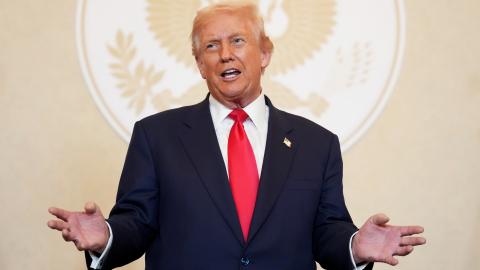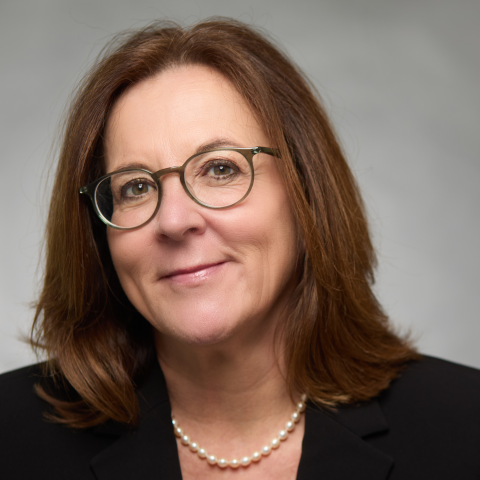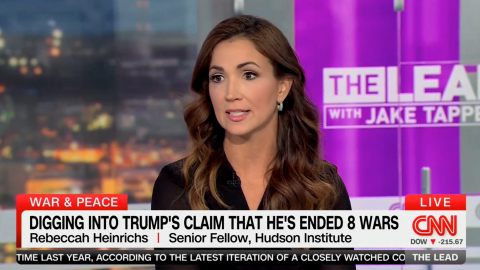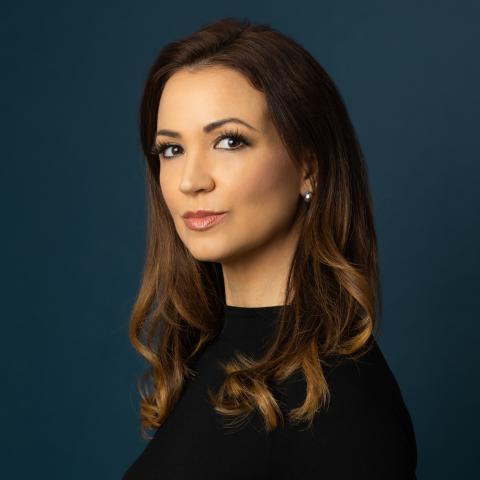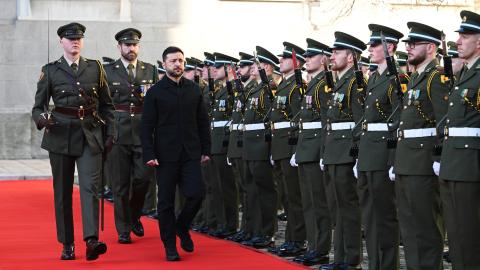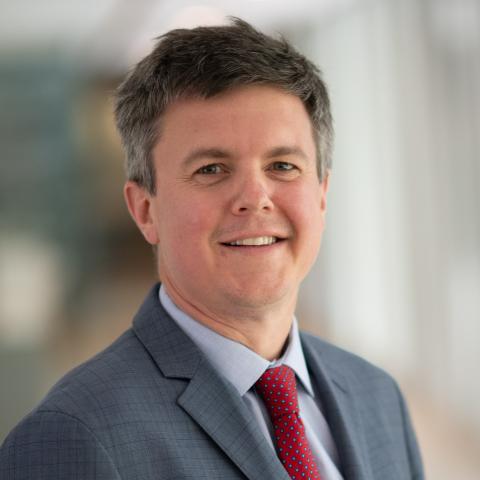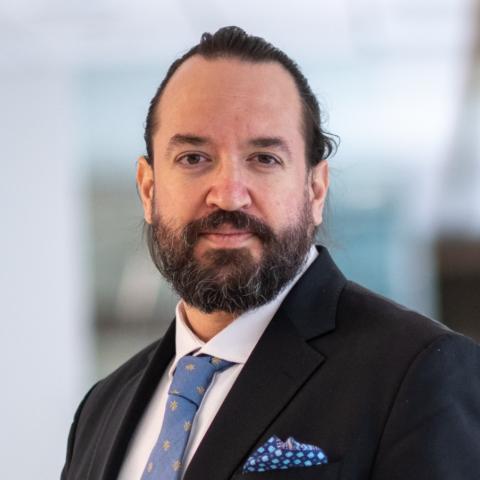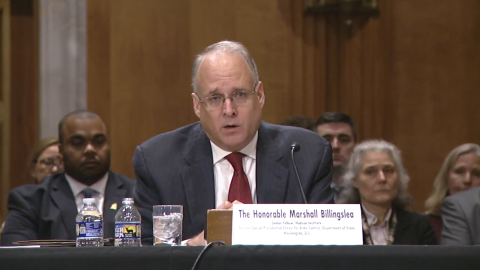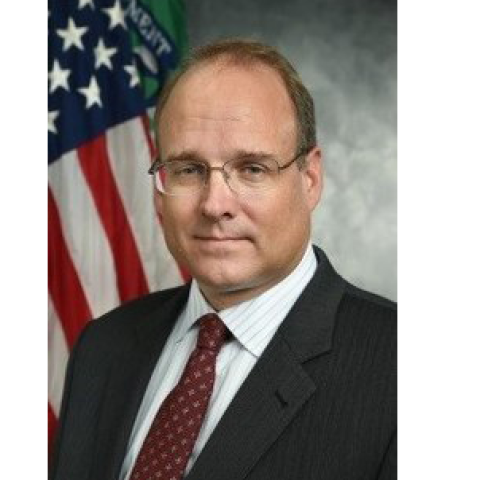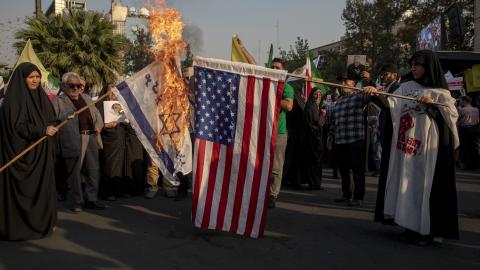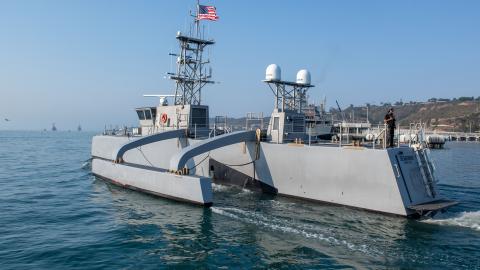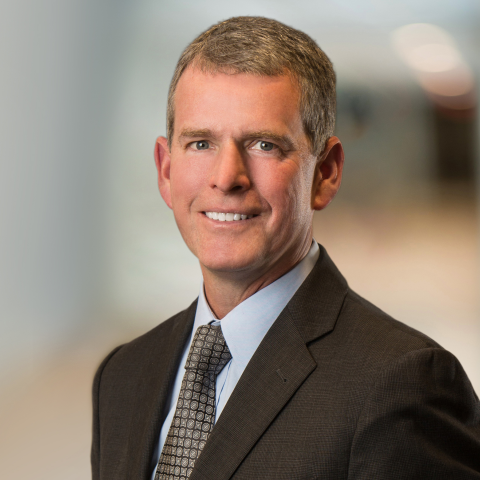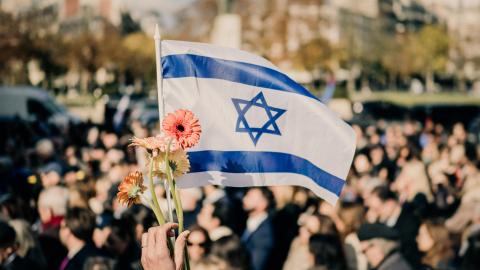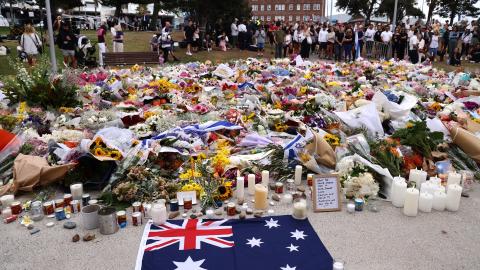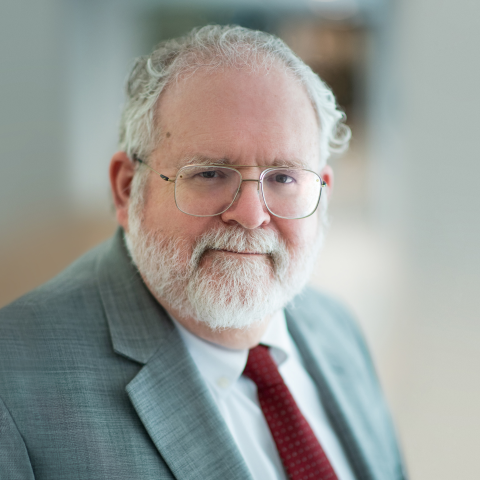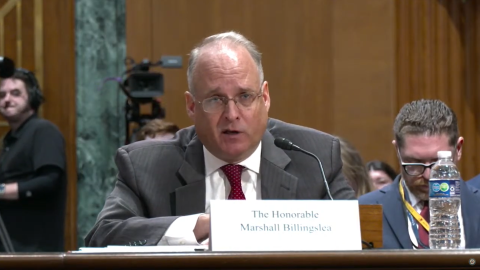Marshall Billingslea testifies before the Senate Caucus on International Narcotics Control at a hearing titled, “Global Gangsters: Hezbollah’s Latin American Drug Trafficking Operations.”
Written Testimony
Chairman Cornyn and Co-Chairman Whitehouse, it is a pleasure to be with you today to discuss how Hizballah finances its terrorist activities through both drug trafficking and money laundering operations in Latin America. As you will have seen from my resume, I have worked against this terrorist group in multiple government roles, most recently while at the U.S. Treasury, as Assistant Secretary for Terrorist Financing and Financial Crimes, from 2017- 2020.
I will focus my comments today on two aspects of the problem: (1) the types of money generating activities in which Hizballah is engaged in Latin America; and (2) the emergence of Venezuela as a major hub for the group. During the question and answer period, I am also prepared to offer thoughts on what we need to do to better counter the threat.
Prior to Israel’s operations over the past year, without a doubt Lebanese Hizballah operated the most far flung, diversified financial operations of any terrorist group. While the terrorist group’s senior leadership has now been mostly eradicated, its Al Qard al Hassan (AQAH) banking sites in Lebanon mostly destroyed, and its primary benefactor – Iran – has been dealt a heavy blow, its financiers and their businesses have nevertheless gone largely unscathed. This is especially true in Latin America. 2 Hizballah has long been present in our Hemisphere. Its first terrorist attacks outside of the Middle East were in Argentina, with the bombings in 1992 and 1994 against the Israeli Embassy and the Argentine Jewish Community Center (AMIA) in Buenos Aires, which killed 114 people and injured many hundreds. To this day, the AMIA bombing is still the deadliest terrorist attack in Latin America. Since that time, over the past three decades, Hizballah’s “Unit 910” – the so-called External Security Organization (ESO) – has steadily built up its infrastructure across Latin America.
Initially, Hizballah capitalized on a combination of weak local governance, corruption, and the presence of sympathetic diaspora communities to create cells and recruit financial facilitators. Two of the first beachheads for the group were in Colombia and in Paraguay, in the tri-border area it shares with Brazil and Argentina. In the 1990s, Colombia was indispensable as a logistics hub, particularly for obtaining citizenship documents (whether legally or fraudulently) that allowed Hizballah operatives to move more freely around South America. For instance, one of the main architects of the AMIA bombing, Salman Raouf Salman, operated under a false Colombian identity for decades, as did his brother.
In Ciudad del Este, the second largest city in Paraguay, Hizballah made inroads through clans such as the Barakats, and established retail moneymaking fronts in local malls that engaged in trade-based money laundering and which benefited from lax custom and tax enforcement on the Brazilian side of the border. Over time, this business model has expanded into Brazil. For instance, the Asfour clan established multiple cellphone and electronics 3 shops at the Galeria Page shopping mall in Sao Paolo. Collectively, over two decades this group moved nearly $50 million through the Hizballah-friendly Jammal Trust Bank in Lebanon (now sanctioned). But more importantly, as Hizballah affiliated groups such as the Barakat and Hijazi networks increasingly moved into the narcotics trade, Hizballah revenues from South America soared. In 2016, Ali Issa Chamas was arrested in Ciudad del Este handling cocaine concealed as charcoal (aka “black cocaine”). By 2018, my then-Paraguayan counterparts were far more concerned about the trafficking of Bolivian-origin cocaine infused into charcoal (to evade drug-sniffing canines and visual inspections), than they were the smaller scale retail business operations of Hizballah.
In Colombia, a similar evolution occurred. By the early 2000s, Chekry Harb had established ties to the Colombian cartel Oficina de Envigado, smuggling cocaine to Syria via Jordan. The Nassereddine brothers meanwhile were operating in both Colombia and Venezuela with the FARC, trading cocaine for weapons. Ali Mohamad Saleh and Ayman Joumaa had their own operations out of Maicao, Colombia, with the latter also working with Mexico’s Los Zetas cartel. The trafficking of Colombian black cocaine was in full swing by 2015, as documented in the indictment of Hassan Mohsen Mansour. I commend to the Caucus an excellent recent article by a friend of mine and Dr. Levitt’s, Aurora Ortega; she details the rise of charcoal shipments as drug-smuggling tradecraft. As Aurora points out, charcoal is now being used to also smuggle marijuana, methamphetamine, and Captagon. In her report, she details Hizballah’s charcoal scheme and its direct ties to funding the ESO. This contributed to the Treasury designation of this ESO network in 2023, as well as 4 the 2024 arrest of the primary Hezbollah operative engaged in the Colombian charcoal activity, Mahdy Akil Helbawi – the son of one of the ESO operatives involved in the 1994 terrorist attack in Argentina.
With its expansion into additional countries and entry into the narcotics trade, by 2018 as much as a third of Hizballah’s funds may have come from South America, perhaps as much as $200 million per year according to Dr. Emmanuel Ottolenghi. Contrast this with the $700-$800 million a year given to Hizballah by the Iranian Revolutionary Guards Corps’ Qods Force, and you can see how important Latin America is to the terror group. It is even more important now, given what has happened to Hizballah’s infrastructure in Lebanon, and reimposition of maximum economic pressure on Iran via both U.S. and United Nations Security Council sanctions.
My second observation regards the dangerous rise of Venezuela as a base of operations and terrorist financing for the group. As Hizballah facilitators turned to the drug trade in Colombia, they inevitably came into increasing contact with drug cartels in Venezuela’s Zulia State. When the United States moved from a focus on eradication of cocoa in Colombia to supporting Colombian special operations forces in direct action against the FARC leadership, the cocaine trafficking routes gradually shifted from going out of Colombia to exiting via Venezuela. Hizballah traffickers made the same shift. For instance, when Treasury designated Ali Mohammad Saleh as narcotics kingpin in 2011, and then he and his brother as terrorist financiers a year later, they relocated from Maicao, Colombia, to Maracaibo, Venezuela. As another example, Ghazi Nassereddine (who organized the aforementioned cocaine for 5 weapons scheme between the FARC and Hizballah) holds Venezuelan citizenship and worked at the Venezuelan embassy in Damascus where he arranged meetings with Hizballah officials. He also used his position to distribute Venezuelan passports to Hizballah operatives to conceal their identities.
Under Hugo Chavez, Venezuela opened its doors to Hizballah, allowing the group establish a major footprint, including a paramilitary training site, on Margarita island. As far back as 2002-2003, there were indications that document forgery was occurring on the island to facilitate terrorist travel. The Venezuelan regime is also known to have been awarding contracts to Hizballah controlled companies at the time, such as with a May, 2001 contract to Saleh Trading LTDA for shirts. When Maduro seized control, the breadth and depth of Hizballah’s presence in Venezuela dramatically expanded, as did their ties to the narco-terrorist regime and the Cartel de los Soles. Tareck El Assaimi, who held a number of senior regime posts until his arrest (for stealing more than his fair share from other cartel members),was at the heart of this expansion. As head of ONIDEX, Venezuela's passport and naturalization agency, he was instrumental in furnishing passports and citizenship documents to Hizballah operatives as well as a large number of people from Lebanon, Syria, and Iran. Between 2010-2019, regime officials provided Venezuelan passports to more than 10,400 people from these three countries. While I have not seen data for the past six years, Venezuelan opposition members tell me that the total number is more than 20,000. Some of these passport holders have made it illegally 6 into the United States, and at least one likely made transfers to relatives with accounts at JTB, the sanctioned Lebanese bank.
More recently, Saudi press reporting from April, 2025 states that approximately 400 Hizballah commanders have been ordered to leave Lebanon for South America, including Venezuela specifically, due to fears they could be targeted as the Lebanese government pursues dismantlement of the group. While I do not know whether the Maduro regime is providing passports to these Hizballah fighters, past behavior strongly suggests that it would be willing.
In conclusion, I offer two final thoughts. First, while under the control of Hassan Nasrallah, Hizballah operatives were discouraged from engaging in the drug trade, at least in public discourse. Though in private, the Shura Council generally looked the other way when the profits came in. Now, with their Lebanese infrastructure in shambles, and with robust financing from Iran again in doubt, I believe Hizballah will make a hard pivot to Latin America and to the drug trade in particular. Second, the Venezuelan regime today has become a central player not only in the trafficking of cocaine to the United States, but as a willing safehaven for the most dangerous foreign terrorist organization in the world. Again, I appreciate the opportunity to testify before the Caucus today, and look forward to your questions.
